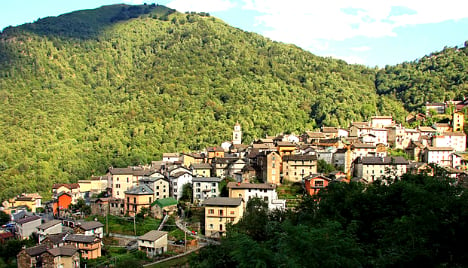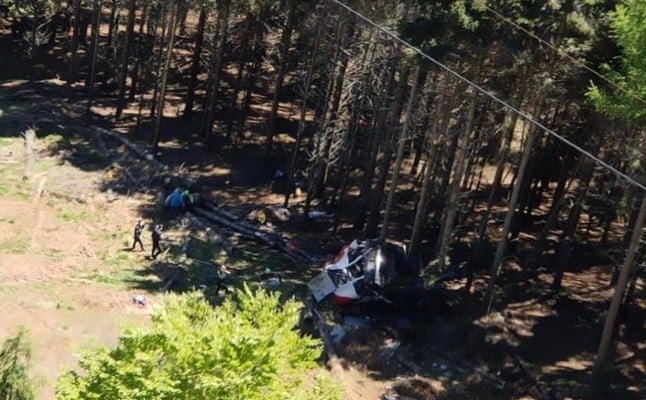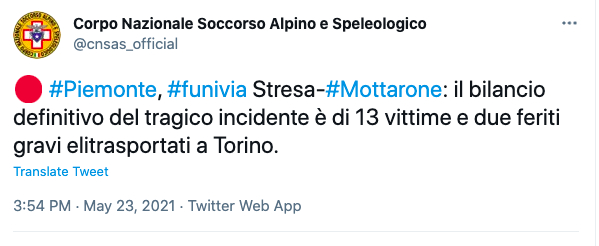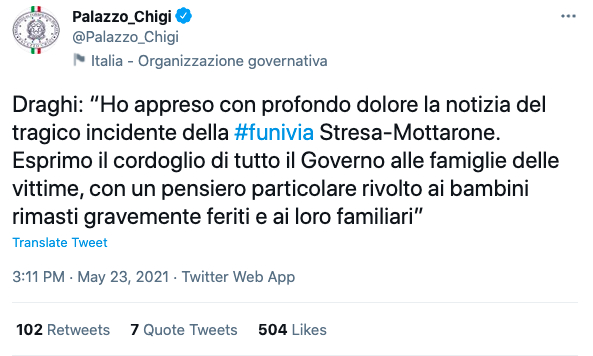When Italy played Scotland in a Six Nations rugby game on Saturday, the residents of Gurro, a tiny town perched in the hills above Lake Maggiore, were left feeling divided.
“But most of us support Scotand, especially in the rugby, and we were pleased they won,” Adolofo Nicolussi, who works as a volunteer in Gurro's ethnographic museum, tells The Local.
But Scottishness among the town's 221 inhabitants runs deeper than mere sports affiliation.
Kilt-wearing Italians sip espresso at the Scottish Association bar, which doubles-up as a welcome centre for visitors.
Residents also have a strange, incomprehensible dialect and penchant for playing bagpipes full-blast.
Even some of their surnames, including Gibi, Pattriti and Donaldi, are just Italianized forms of Gibbs, Fitzpatrick and MacDonald.
“The parish register is full of them,” 75-year-old Nicolussi said.
But why?
In 1525, a group of Scottish mercenaries were forced to retreat in the town, which lies close to the Swiss border, because of the onset of winter.
“Our town was colonized by the surviving mercenaries who were traipsing over the Alps after fighting the nearby battle of Pavia,” Nicolussi explained.
“They say that over the winter they had fallen so in love with the mountains, which reminded them of their native Highlands, that they decided to stay come spring.”

A Highland paradise? Gurro. Photo: Wikimedia
Eventually the town's story attracted the attention of researchers at the University of Zürich, who carried out a linguistic study in the town. They identified 800 words in the local dialect of Gaelic origin.
Forty-three years ago, the town's inhabitants were officially recognized as members of the Gayre clan, a group purporting to be a historic clan, whose authenticity has been challenged by Scottish historians.
The clan was founded in 1947 by anthropologist Robert Gayre, who visited Gurro in 1973 to officially recognize its inhabitants as members.
Gayre stated in his proclamation that he was able to welcome the townsfolk as his Gayre brethren using the “ancient practice” of adoption, which is “always used to concede membership of a clan to scattered Scots.”
For the occasion, he presented Gurro with its own official tartan and sporran.
“His son – current clan leader Reinhold – came back to celebrate the 40th anniversary of our initiation and is always inviting me to stay in his castle, but I've not been yet,” Nicolussi said.
Even though the authenticity of the Gayre clan has been disputed by some Scottish historians, Gayre's recognition has encouraged many of the townspeople to make visits to Scotland to embrace their roots.
“Over the years many of our youngsters have been fascinated by this aspect of our history and have made trips to Scotland. We also get quite a few curious Scottish visitors each year, who come to see if the stories are true.”
It's common for foreigners to visit on the second Sunday of July, when the town celebrates its feast day by donning its Tartan and marching the pipers through town, which can be seen on the video below.
The tartan is not just reserved for special occasions either, although many of the men do not consider kilts manly.
“Around 40 women in the town wear their kilts all the time nowadays but it hasn't really taken off among the men,” Nicolussi said.
Pipes, language and tartan aside, what other traces of Scotland does the town still bear?
“In his studies Gayre identified an architectural technique that had been used to make some of the towns' houses, but that's about it. We have our own history too: we were one of the last Italian towns to cultivate cannabis until the state shut production down in 1968.”
No haggis?
“Perhaps thankfully, our dishes are typically Italian.”





 Please whitelist us to continue reading.
Please whitelist us to continue reading.
Member comments